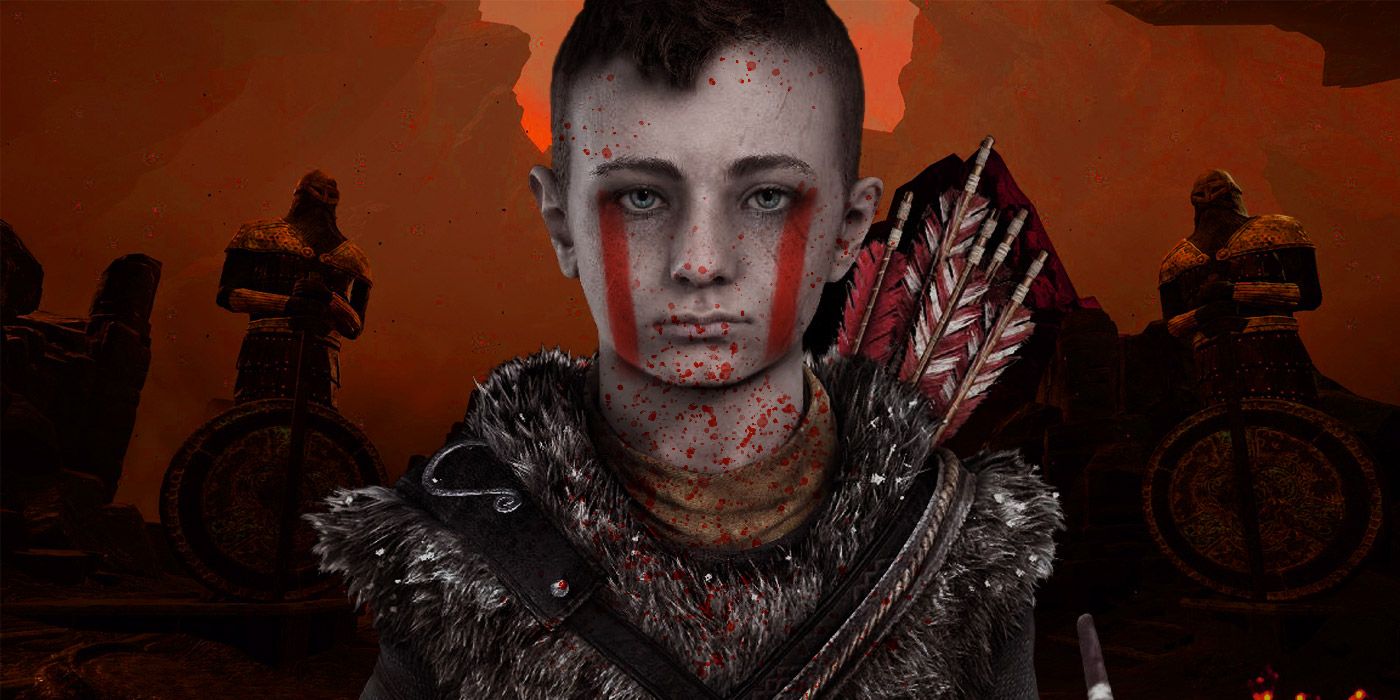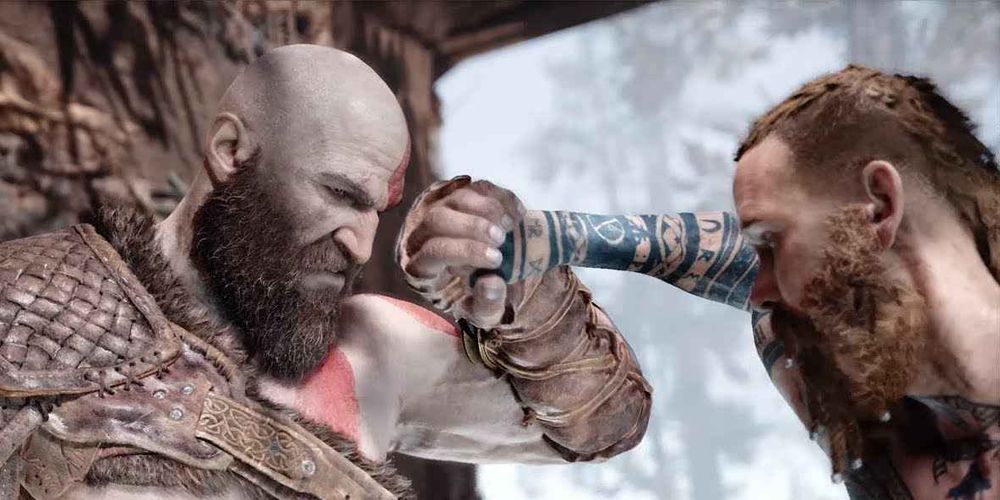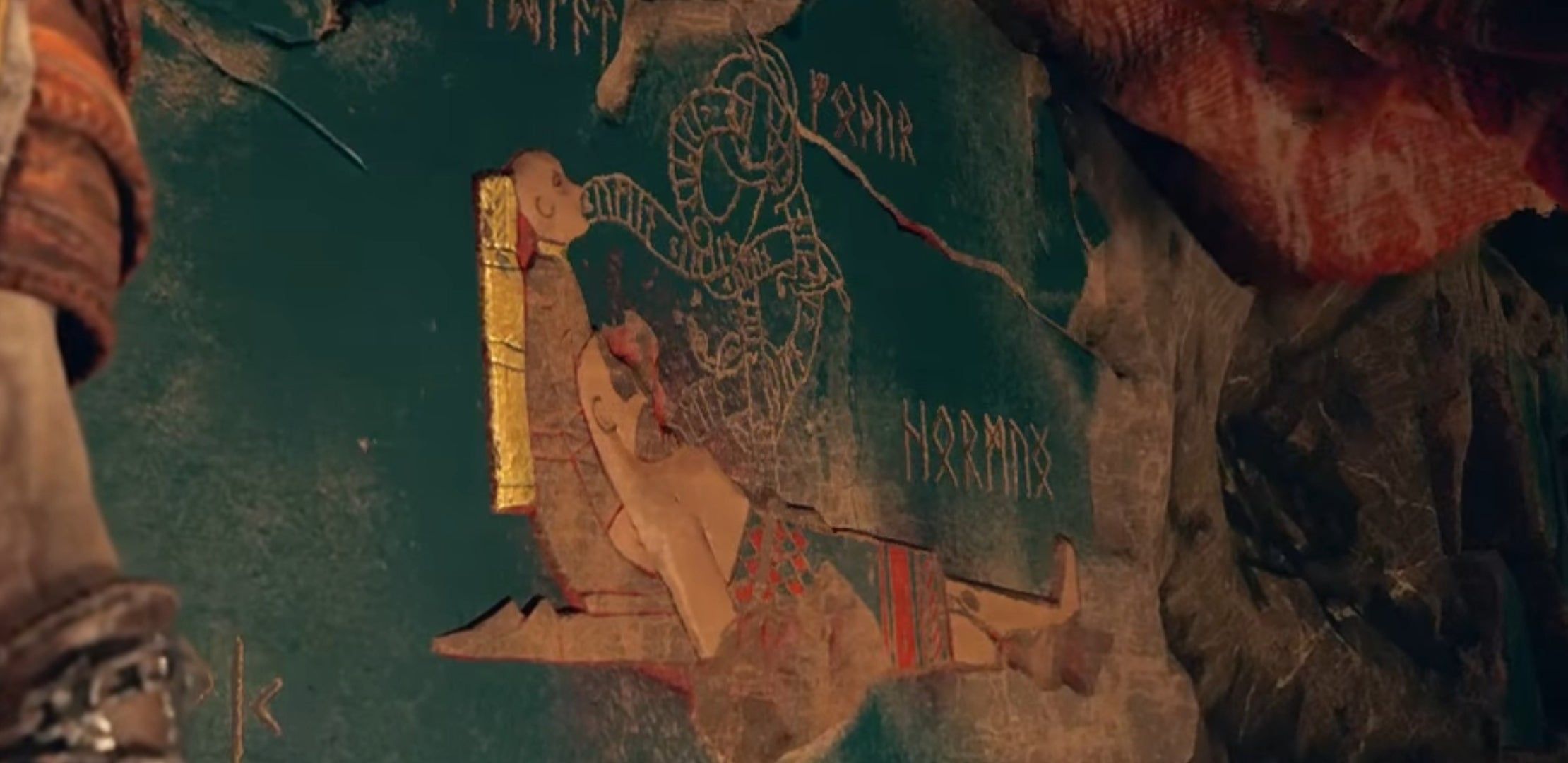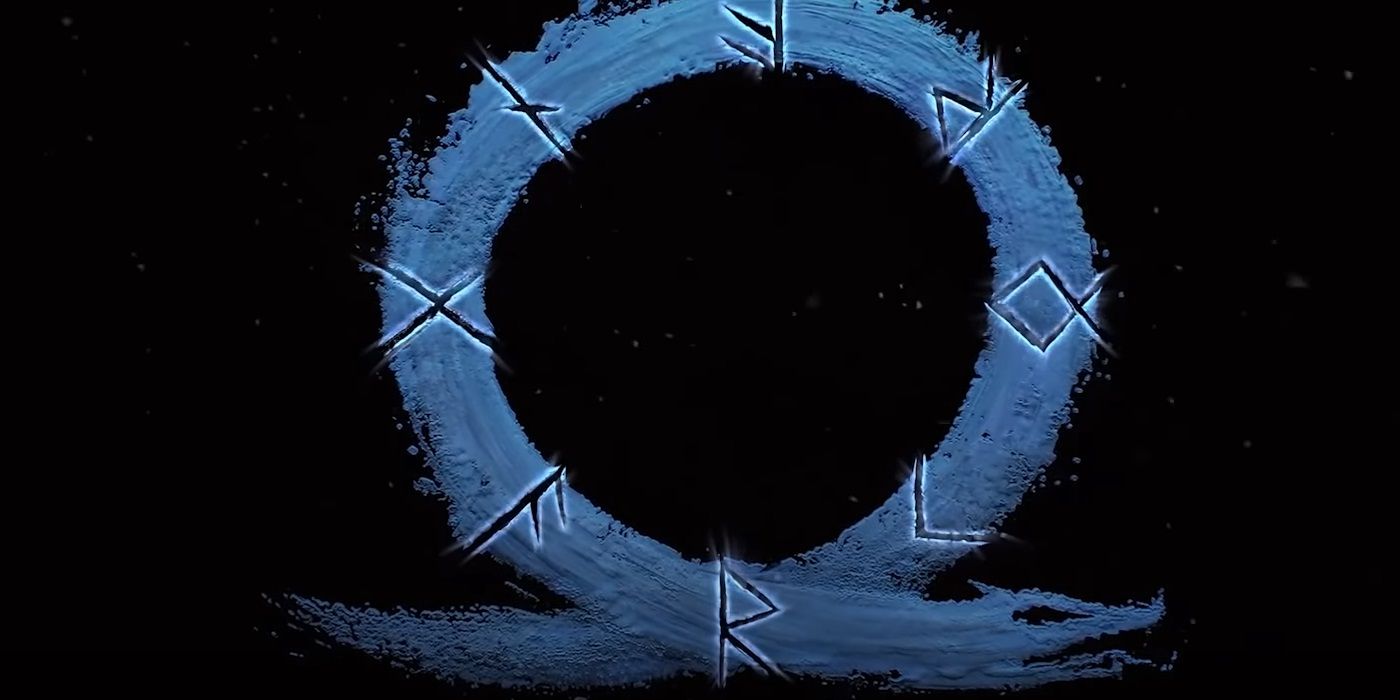God of War: Ragnarok is the upcoming sequel to the 2018 game, and while that title is not official, fans have clung to it since its PS5 reveal trailer. As stated there, "Ragnarok is coming," which suggests the game will be centered around the end times prophecy from Norse mythology. With the series’ focus on fate and cycles, and with prophecies being a generally reliable source in Kratos’ universe, the sequel is in a unique position where many fans are wondering how certain events will play out but not what those events will likely be.
At the end of God of War, players find a mural in a temple constructed by the giants of Norse mythology before they left the realm of Midgard. The Jotunheim mural shows the past, present, and future of the Nine Realms. It also shows the life of Atreus, Kratos’ son, including a glimpse into the future of both characters revealed only after Atreus leaves the temple, and this has huge implications for God of War: Ragnarok.
The Twilight of the Gods
The past, present, and future are very loose in Norse mythology, and this is frequently referenced in the new God of War games. Kratos is Atreus’ father, and the reveal that Faye was a giant who wanted to name Atreus Loki reveals his son to be the "real-world" Norse god of trickery. However, Loki is also the father of characters that already exist in the God of War universe, like Fenrir the wolf that will eat Odin during Ragnarok, as well as the World Serpent.
The World Serpent features heavily in the first game. Though Fenrir isn’t seen face-to-face, Mimir, AKA " the talking head", talks about both Fenrir and his sons Skoll and Hati who will eat the sun and the moon at the start of Ragnarok. This might seem like circular logic, but the God of War franchise itself deals a lot in circularity, with the cycles of violence that repeat between fathers and sons throughout the original series before the soft reboot.
Indeed, the Ragnarok prophecy details the death of the gods in great detail, and the order in which events will take place. Ragnarok is preceded by Fimbulwinter, a winter which lasts for three years which is triggered by the death of Baldur at the end of the 2018 game. The following events result:
- Skoll and Hati mark the start of Ragnarok by eating the Sun and Moon.
- Asgard will be burnt to the ground by Sutr, but Thor and Odin will kill him.
- Fenrir and Odin will kill each other.
The Final Prophecy
However, the Jotunheim mural also reveals how the Ragnarok prophecy from mythology will be adapted for the God of War story. Loki is already featured in the real Ragnarok prophecy, where he escapes his imprisonment under the earth to join the giants and die in battle with Heimdallr. Since Atreus is never imprisoned by in God of War, it can be assumed that his entire story is being adapted differently, though it is possible Thor's arrival in God of War's secret ending leads to Loki's imprisonment by Thor like in the myth.
After Atreus leaves the Jotunheim temple in God of War, a curtain blows back to reveal a final part of the mural to Kratos. This part of the mural shows an apparently dying Kratos being held in Atreus’ arms, with some sort of cryptic tube-like shape connecting them by the mouth. This appears to imply that Kratos will also die at the end of Ragnarok.
In the giants’ futhark runes, Kratos is called Farbauti. Farbauti is a giant in Norse mythology who is sometimes referred to as Loki’s father, but his fate during Ragnarok is unclear. The figure on the mural could also be the god Odin, as he appears to be missing an eye and lacks Kratos' trademark tattoos. While Kratos is depicted with his tattoos earlier in the mural fighting Baldur, Odin has yet to be revealed.
The Runes
The runes around Atreus and the figure are in Elder Futhark and spell "andlat," "foður," and "hormui" which can be translated from Icelandic to mean "death," "father," and "mourned" respectively. The Icelandic language is known for its conservatism and can still be used to read many writings in Old Norse. Father could also refer to Odin, also known as the Allfather, but the word "svik" is also just to the figure's left, which means "betrayal" or "deceit," and could mean Atreus has killed Kratos, his father.
It remains unclear, however, what the substance transferring between Atreus and the figure's mouth is. If it is not in fact representative of Atreus killing the figure but instead reviving them, then Atreus could be saving Odin, which in turn could be a betrayal of Kratos in the next installment in the God of War series.
It is also possible that "svik" is simply a reference to Loki himself as the god of deceit just as father could refer to Odin's role as a god. However, this appears to be made less likely by the fact that the word precedes the final mural instead of being placed over it like the other runes. The mural moves through time from left to right, which implies that "svik" - whether it means deceit as an abstract concept or betrayal as an action - is the cause of the events seen in the final panel. The betrayal could also be Loki fighting with Kratos against the other Aesir of Norse mythology in God of War: Ragnarok.
God of War: Ragnarok will likely deal with the cycle of patricide present throughout the God of War games. Zeus killed his father Cronos, Kratos killed his father Zeus, and in some way Atreus appears to have killed Kratos (or will, in some way). Whether Atreus can in some way stop the prophecy from coming true, or whether Kratos can find a way to make his sacrifice a meaningful way to break the cycle, remains to be seen.
A new God of War will launch in 2021 for PS5.




